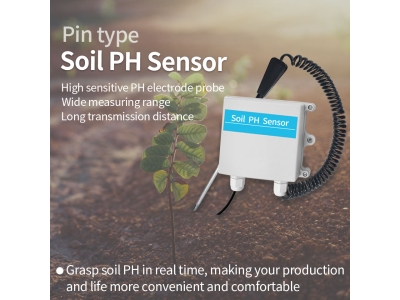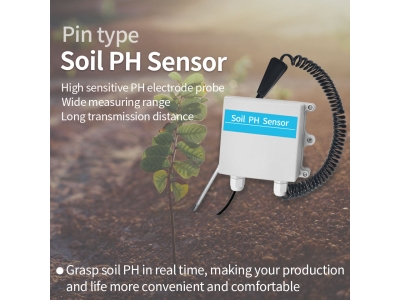Agriculture has always been a vital industry, providing food and resources for human survival and development. As the global population continues to grow, agricultural practices must evolve to meet the increasing demand for food while minimizing environmental impact. One innovative solution that holds great promise is precision agriculture, which utilizes advanced technologies such as soil sensors to optimize crop production and resource management. In this article, we will explore the role of soil sensors in precision agriculture and how they are shaping the future of farming.

Soil sensors are devices that measure various parameters of the soil, including moisture content, temperature, nutrient levels, and pH. These sensors are typically embedded in the ground at different depths, allowing farmers to monitor the soil conditions in real-time. The data collected by these sensors is then transmitted wirelessly to a central database, where it can be analyzed and used to make informed decisions about irrigation, fertilization, and other agronomic practices.
One of the key benefits of soil sensors is their ability to provide accurate and localized information about soil conditions. Traditional methods of soil testing, such as manual sampling and laboratory analysis, are time-consuming and may not capture the spatial variability of soil properties. Soil sensors, on the other hand, provide real-time data on soil conditions at multiple locations within a field, allowing farmers to make site-specific management decisions. For example, if a soil sensor detects low moisture levels in a particular area, farmers can adjust their irrigation practices accordingly, ensuring that crops receive the optimal amount of water for growth.
Another benefit of soil sensors is their ability to promote efficient resource management. By providing precise data on soil moisture, temperature, and nutrient levels, soil sensors enable farmers to apply water, fertilizers, and other inputs more efficiently. This not only reduces waste and environmental pollution but also improves crop yield and quality. For instance, instead of uniformly applying fertilizers across an entire field, farmers can use soil sensor data to identify areas with nutrient deficiencies and apply fertilizers only where they are needed. This targeted approach not only saves resources but also reduces the risk of over-fertilization, which can have negative impacts on water quality and ecosystem health.
Soil sensors also play a crucial role in soil health management. Healthy soils are essential for sustainable agriculture, as they provide a fertile environment for plant growth, store carbon, and support biodiversity. Soil sensors can provide valuable insights into soil health by measuring parameters such as organic matter content, compaction, and microbial activity. By monitoring these indicators, farmers can make informed decisions about soil management practices, such as cover cropping, crop rotation, and tillage. This, in turn, helps to improve soil structure, nutrient cycling, and overall soil health, leading to more resilient and productive agricultural systems.
However, the adoption of soil sensors in precision agriculture still faces some challenges. One of the main challenges is the cost of installation and maintenance. Soil sensors can be expensive, particularly for small-scale farmers who may not have the financial resources to invest in such technology. Additionally, soil sensors require regular calibration and maintenance to ensure accurate and reliable data collection. This may require specialized knowledge and training, which can be a barrier for some farmers.
Despite these challenges, the future of precision agriculture looks promising with the help of soil sensors. As technology continues to advance and costs decrease, soil sensors are becoming more accessible to farmers around the world. The integration of soil sensor data with other technologies, such as satellite imagery and weather forecasting, further enhances the potential of precision agriculture. By optimizing resource management, improving soil health, and reducing environmental impact, soil sensors are revolutionizing the way we farm and paving the way for a more sustainable and productive future.






